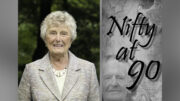LOS ANGELES (AP) — When it comes to the NHL All-Star Game, less is definitely more.
While the NFL’s Pro Bowl spent years struggling with ballooning scores, little defense, a lack of effort and concerns over its long-term viability, the NHL seemingly remedied many of those same issues by changing to a 3-on-3 format last year. The four-team divisional tournament ended Sunday with victory for the Metropolitan team and excitement about the show from players and fans alike.
“I love 3-on-3,” Calgary Flames forward Johnny Gaudreau said. “I love the open space, creativity and making plays. It’s a lot of fun. It gets a little bit competitive, too.”
That last part was too often missing during the 1990s and early 2000s as double-digit scores became the norm, prompting the league to experiment with a North America vs. the World format, along with two editions in which captains drafted their teams.
But after a 17-12 final in 2015, the adoption of a 3-on-3 mini-tournament succeeded in producing both entertainment and high drama.
In the inaugural edition last year in Nashville, the two semifinal games included 22 goals, but the final between the Pacific and Atlantic ended 1-0.
On Sunday at Staples Center, the winning teams in both semifinals scored 10 goals apiece, but the final score was a mere 4-3. Nobody scored in the final 4:58 as both teams focused on defense for the victory and the combined $1 million in prize money for the winning team.
“It felt more like a real game toward the end, blocking shots and things like that,” Metropolitan captain Sidney Crosby said. “(To) see that transpire and see how it elevated as it went on, that was fun. Hopefully the fans enjoyed it, because as players we started to get into it, especially in the second half of that game.”
The format allows the NHL to highlight the strengths of its on-ice product, from the skill of defenders such as Drew Doughty of the host Los Angeles Kings to an emerging crop of speedy superstars led by Edmonton’s Connor McDavid.
Brent Burns, the tattooed and toothless turbine that powered the San Jose Sharks to the Stanley Cup Final last season, has two 3-on-3 overtime goals this season, the same number as league standard-bearers Crosby and Alex Ovechkin have combined. The two-way games of Burns or Doughty can be featured in 3-on-3, where endurance, puck handling and strong skating become even more valuable from defensemen.
And for the blazing McDavid, who won the fastest skater event during Saturday night’s All-Star Skills Competition, the open space and constant back-and-forth breaks gave him a chance to seize the spotlight in his first career appearance. McDavid scored one of the prettiest goals of Sunday’s game for the Pacific team, getting a breakaway and beating Sergei Bobrovsky with a nimble stop and a shot while falling down.
“I really, really like the format,” McDavid said.
McDavid also was responsible for a Pacific goal getting taken off the scoreboard when he was caught barely offside in the final.
Gaudreau played with McDavid and Matthews as part of Team North America during last year’s World Cup of Hockey, and he appreciates the new All-Star format’s ability to feature what the future faces of the sport do best.
“Game’s getting faster. Got to be fast, skilled. The game is definitely changing I think. It’s great to see younger guys here,” Gaudreau said.
Even the goaltenders trying to contend with that firepower appreciate the difference 3-on-3 makes in an All-Star setting.
“It’s much more interesting for the fans to watch,” said Bobrovsky, the Columbus Blue Jackets goalie. “It’s more intense. It’s much more fun.”








































